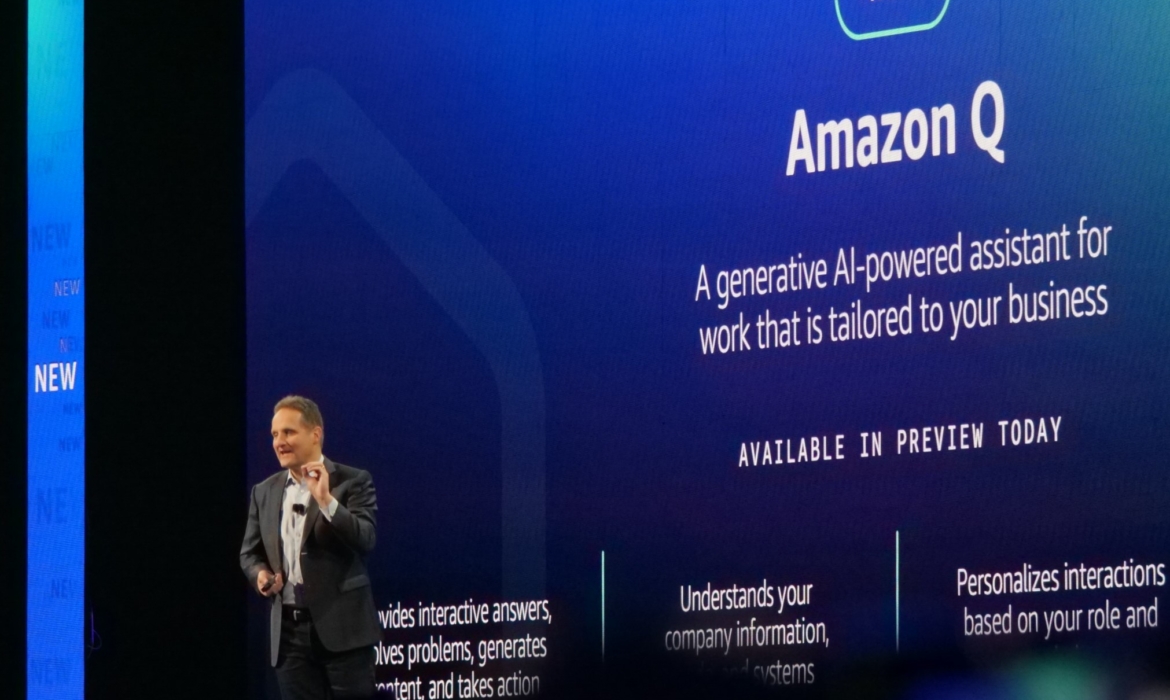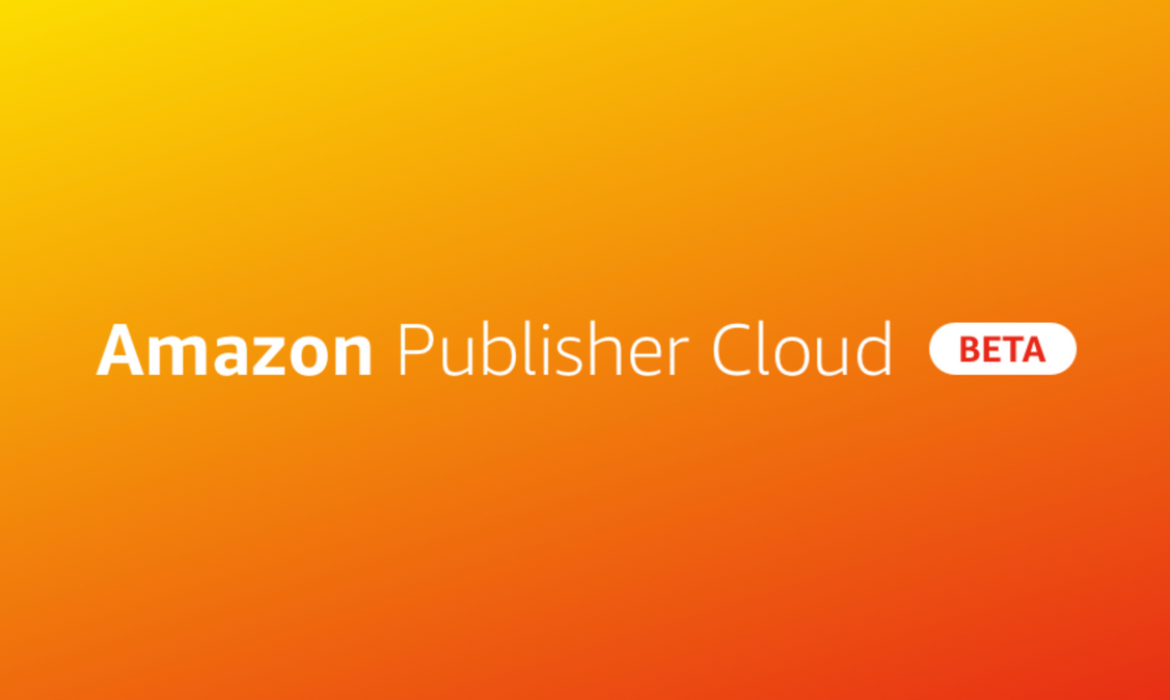Amazon Enters Generative AI Scene With Its Chatbot “Q”
Amazon is introducing “Q,” an AI-powered chatbot designed for AWS users. With the release of ChatGPT by OpenAI, Copilot by Microsoft, and Bard by Google, Amazon has now added its new chatbot to its generative AI portfolio. Q is currently in public preview, with annual user fees starting at $20. It can respond to inquiries such as “How do I use AWS to build a web application?” Q is being marketed by Amazon as a novel kind of generative AI-powered assistant that can respond to queries from staff members, produce content, and take action based on company data.
Meet your new #generativeAI assistant designed for work that can be tailored to your business. 💡
With Amazon Q, you can solve problems, generate content, get insights from data, build faster on #AWS, while helping keep your data private & secure. ☁️
🔗 https://t.co/ZKKQs9gzEc pic.twitter.com/4H0xagrgfI
— Amazon Web Services (@awscloud) November 28, 2023
Q- Amazon’s New Generative AI Chatbot
As per Amazon Web Services, Amazon Q helps agents by providing them with instantaneouas feedback and suggested actions to enhance customer satisfaction and promptly attend to customer requirements. Q uses the information supplied by the companies to create content and provide individualized interactions. Its training is based on 17 years of AWS experience. Although Amazon is the industry leader in cloud computing, surpassing competitors Google and Microsoft, it is not thought to be at the forefront of AI research that has produced advances in generative AI. AWS solutions are recommended for apps that run for a few seconds as opposed to minutes or hours, or for apps that access storage very infrequently, which claims that Q can comprehend the subtleties of app workloads on AWS.
Read More: Meta and Amazon Collaborate for In-App Shopping in FB and IG
Amazon Q for Businesses and Agents
Amazon Q can be customized for any kind of business and offers contact center agents new support. The chatbot helps to understand customer intents and leverages pertinent information sources. This aids in providing accurate responses and actions. Moreover, it allows the agent to communicate and address specific customer needs in real-time. Reduced agent training, resolution times, and costs are achieved by enabling agents to handle customer needs on a wide range of subjects without the need for supervisory support. This feature of Amazon Q in Connect improves customer satisfaction and fosters enduring customer relationships. In addition, Q is capable of troubleshooting network connectivity problems and analyzing network configuration to offer corrective actions.
Q Generative AI for AWS Customers
AWS Customers can set up Q by linking it to software and apps that are specific to their organization. These consist of Gmail, Salesforce, Jira, Zendesk, and Amazon S3 storage instances. Q learns the characteristics of a company. They can be its organizational structures, fundamental ideas, and product names, by indexing related data and content. The AI assistant is designed with security and privacy in mind, allowing users to fully control and filter the actions that Q will perform, as well as inspect what Q will do. Users have the ability to approve the content they view, impose restrictions on sensitive subjects, and, when needed, filter out improper questions and responses.
More than just a chatbot
Q is more than just answering a question. The helper is capable of creating or summarizing emails, press releases, and blog entries. Additionally, it performs tasks on the user’s behalf using a variety of adjustable plugins. These include generating support tickets automatically, alerting specific Slack teams, and updating ServiceNow dashboards. Q asks users to review the actions it is going to take before running them. Furthermore, it also provides links to the results for validation in order to prevent errors.
Read More: Omnicom Signs Generative AI Licensing Agreement with Getty Images
Amazon Announces Publisher Cloud to Plan Programmatic Deals in Amazon DSP
Amazon unveiled Amazon Publisher Cloud, a new collaboration tool that lets publishers organize programmatic deals and activate them in Amazon DSP. It is based on the capacity to examine both first-party signals and Amazon Ads insights. AWS Clean Rooms are the foundation of Amazon Publisher Cloud. Publishers and advertisers can collaborate in a privacy-focused manner and utilize interoperability, enhancing customers’ experiences with more pertinent advertising. Moreover, it will support safe and efficient communication between Amazon Ads and its advertiser and publisher partners.
What is Amazon Publisher Cloud?
Amazon Publisher Cloud is included in the group of cloud-based services called Amazon Publisher Services (APS). It assists publishers in creating profitable digital media businesses. Publishers can deliver more relevant ads to their audiences and optimize results with the help of APS’ server-side header bidding solutions and direct-to-publisher supply relationships. APS offers services, infrastructure, and cutting-edge advertising technologies to publishers of connected TV, mobile apps, audio, and websites. As a result, they will be able to generate revenue from their ad-supported content, create unique demand, allow audience-level buying, and obtain a deeper understanding of their own audiences.
Read More: AMC Networks Pioneers Programmatic Ad Buying on Linear Networks
New Clean Room Solution for programmatic deals
Amazon Publisher Cloud is the first and sole clean room solution that allows a publisher to leverage insights from Amazon Ads. It helps in analyzing first-party signals and creating reach-optimized deals. Through a single, efficient workflow, publisher deals are made accessible for activation in Amazon DSP. For example, a publisher can comprehend how its contextual signals match up with in-market Amazon Ads audiences. Amazon Publisher Cloud-based programmatic deals are offered with beta launch partners like DirecTV, Dotdash Meredith, Fandom, NBCUniversal, TelevisaUnivision, and other premium publishers.
APS for publishers
AWS Clean Rooms serve as the foundation for Amazon Publisher Cloud. It offers publishers flexible interoperability. With AWS Clean Rooms, businesses and their partners can analyze and work together on their collective signals more quickly and securely. Furthermore, they can work without having to share or duplicate each other’s underlying datasets. Customers can work with any other business in the AWS Cloud to generate unique insights about advertising campaigns, investment decisions, and research and development. When compared to an unoptimized campaign, Amazon’s Amazon Prime campaign with NBCUniversal via Amazon DSP during the closed beta period reached more than 3.5 times the target audience.
Here’s what they said
Steve Rabuchin, vice president of third-party supply at Amazon Ads said
Amazon Publisher Cloud is purpose-built to provide publishers with durable addressability of their supply. We built Amazon Publisher Cloud to ensure that publishers securely maintain control of their first-party signals with the ability to analyze them alongside Amazon Ads insights, create customized and more effective deals, and easily make them available in Amazon DSP. We’re excited to connect publishers and advertisers and help them deliver more relevant customer experiences.
Read More: GroupM and Amazon Ads Partner for Creator-Led Shoppable Format



